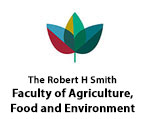Spectral Assessment of Plant Traits
Spectral assessment of plant traits: can we assess what we do not see?
The Plant Sensing Laboratory (PSL) was established in 2018 and its main focus is at early stress detection and identification, and yield prediction based on sensing plant trait assessment. We are using spectral sensors (i.e., multi- and hyper- spectral cameras and spectro radiometrs) mounted on ground, airborne and spaceborne platforms to acquire spectral data.
























